On every budget: budget DUNU headphones
Hi, Giktayms! When it comes to using headphones with portable devices, in-ear headphones immediately come to mind. Their range is incredibly large, and on the one hand, this is good, but on the other, it causes big problems when choosing (many people often wonder why some “plugs” cost 6 thousand rubles, and others - a thousand rubles). In the budget class, recently, headphones of the Chinese brand DUNU have become particularly popular: try to figure out what is special about them, using the example of two models from the manufacturer.
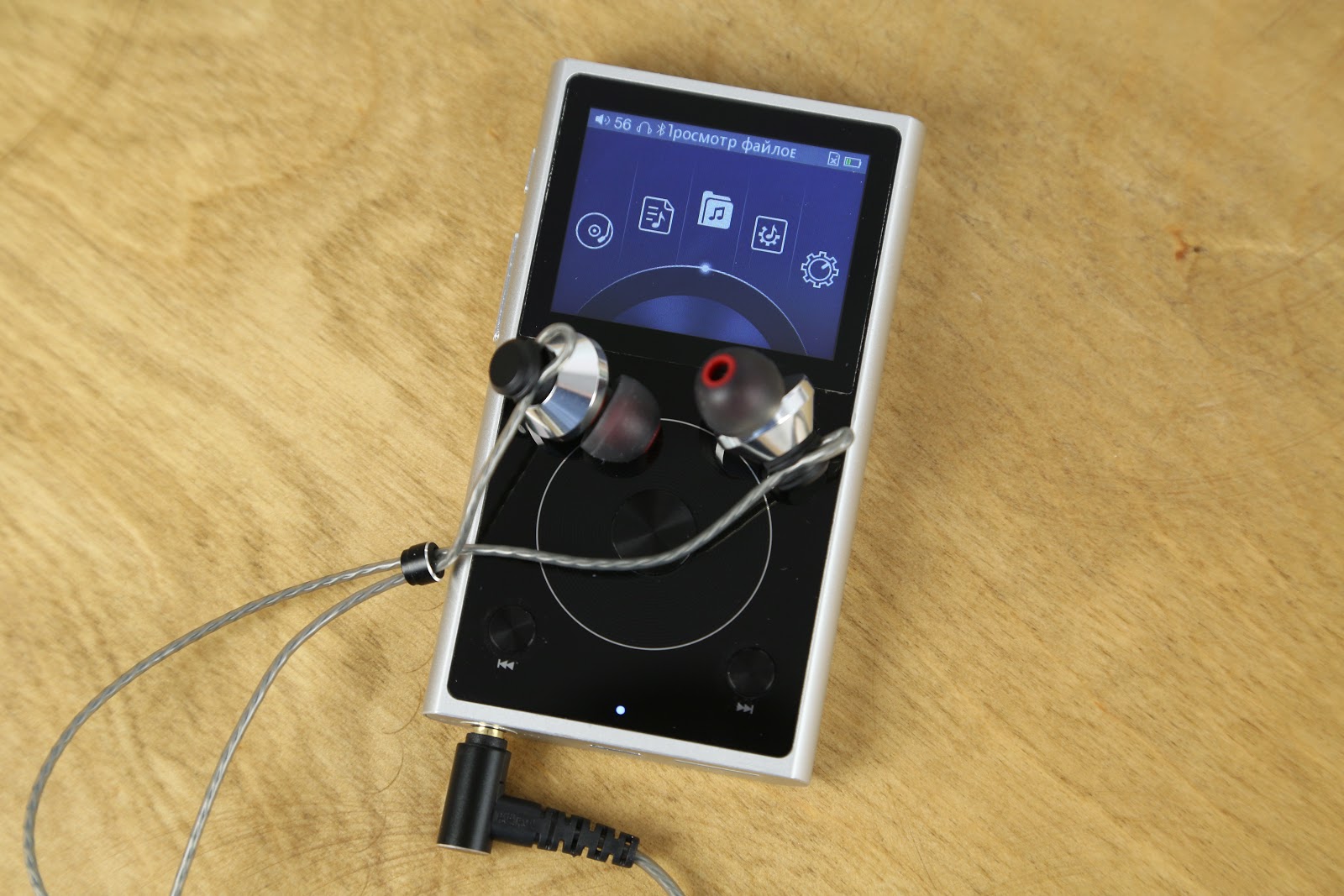
Let's start with the most budget model - DUNU Trident (DN-12). Although this is now far from new, the headphones continue to find recognition even among novice audiophiles - primarily as a high-quality, low-cost alternative to devices from well-known brands. Yes, this is “China”, but “China” is not the same as many are used to: DUNU does not stamp “gags”, like some manufacturers, the company constantly solves complex engineering problems in the field of personal audio, including OEMs for large manufacturers. in the sound market. Therefore, the price tag for headphones of this brand can go up to $ 500 (recall the same DK-3001 model with 4 different emitters). However, this story is not about our today's heroes with dynamic drivers, which does not make them any less interesting.
The black box with the image of the headphones themselves is not expected to cause any sensation of "premium", but at the same time does not look cheap.
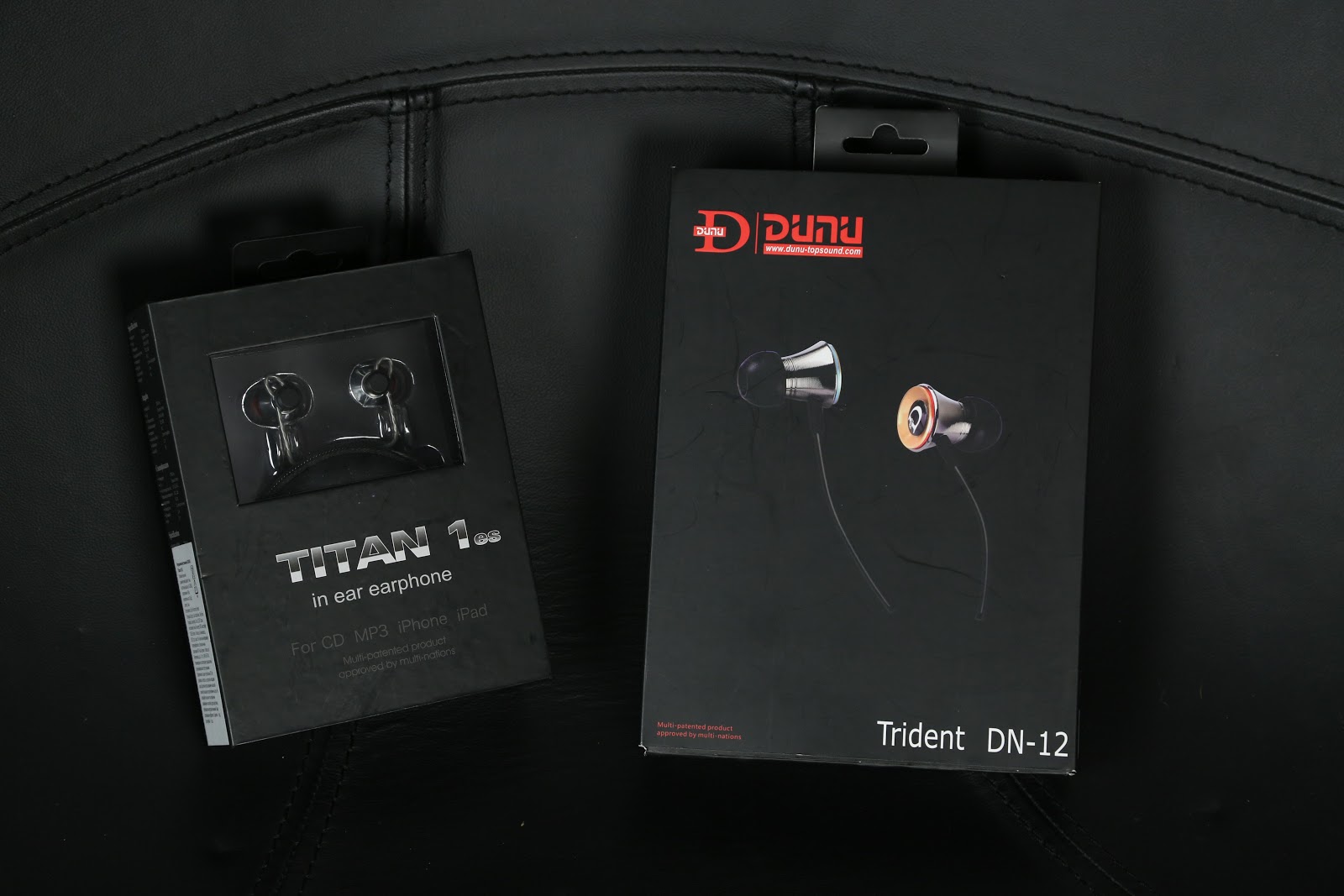
The box itself (on the right) hides neatly packed headphones, a eco-leather case (sewn, by the way, perfectly), a lot of interchangeable ear cushions of different sizes, as well as a clip for attaching a cable to clothes. Looking ahead, we note that the headphones are very comfortable to wear, precisely because everyone can choose the right fit for themselves.
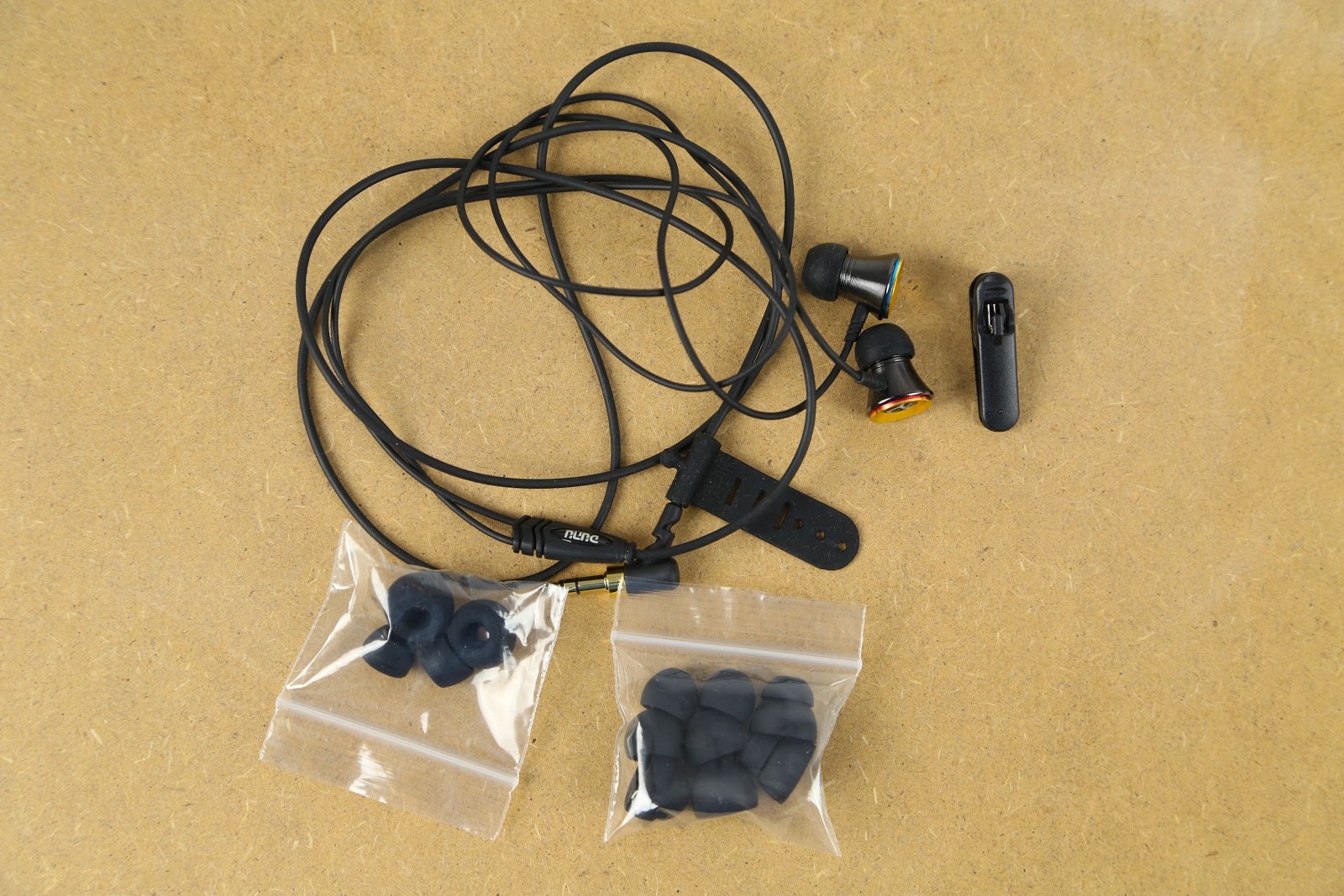
Let the package bundle is not the richest, but everything you need is there - and what were we waiting for, an adapter for two mono jacks for use in an airplane? There is still a completely different price segment.
But DN-12 does not look like its 1.5-2 thousand rubles (I'm sorry, but I didn't have enough strength to keep this price in my head). The headphone case is tapered, made of chrome-plated metal, and has a characteristic radial-shaped metal pattern. The latter, by the way, interestingly “plays” depending on the lighting.
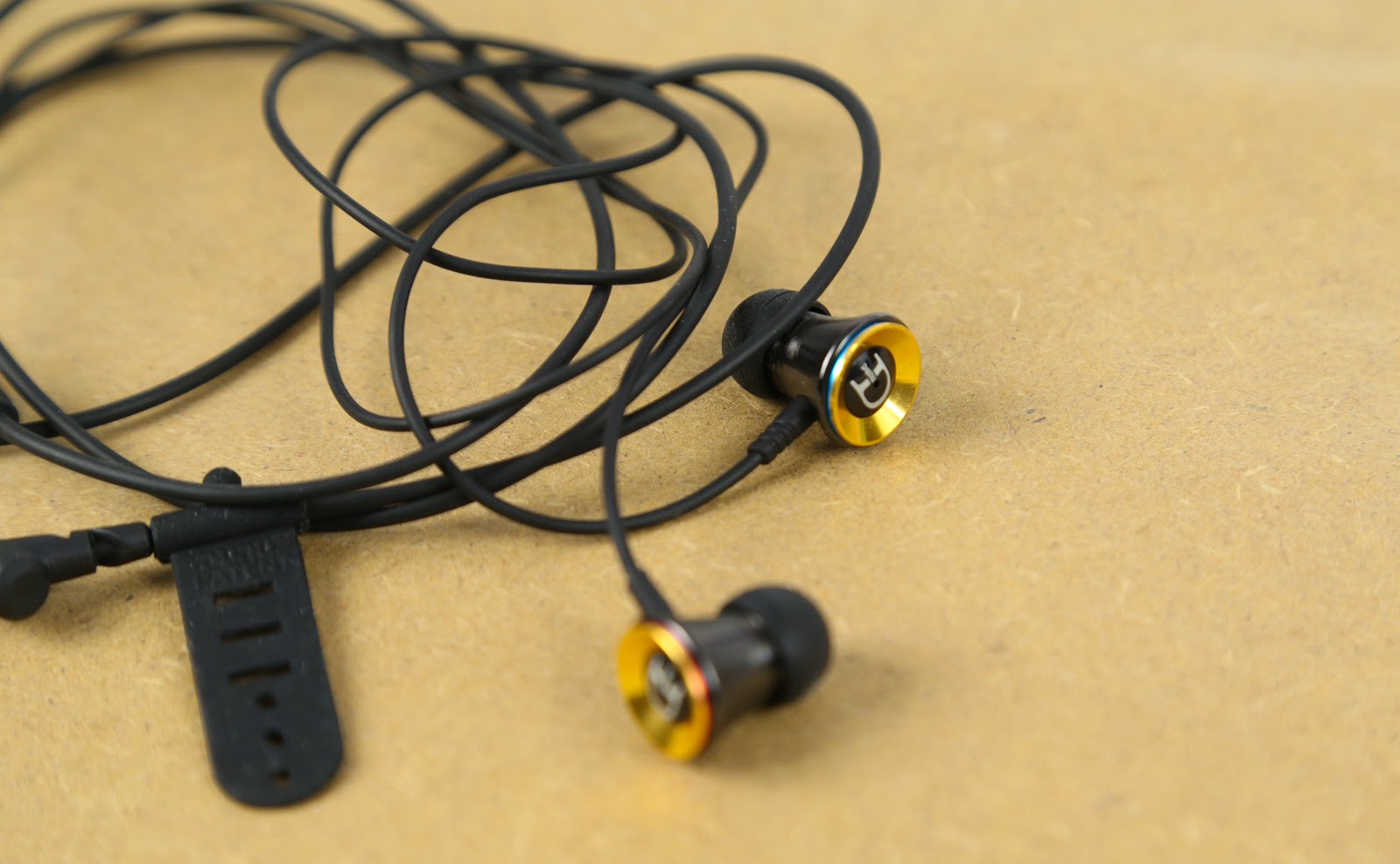
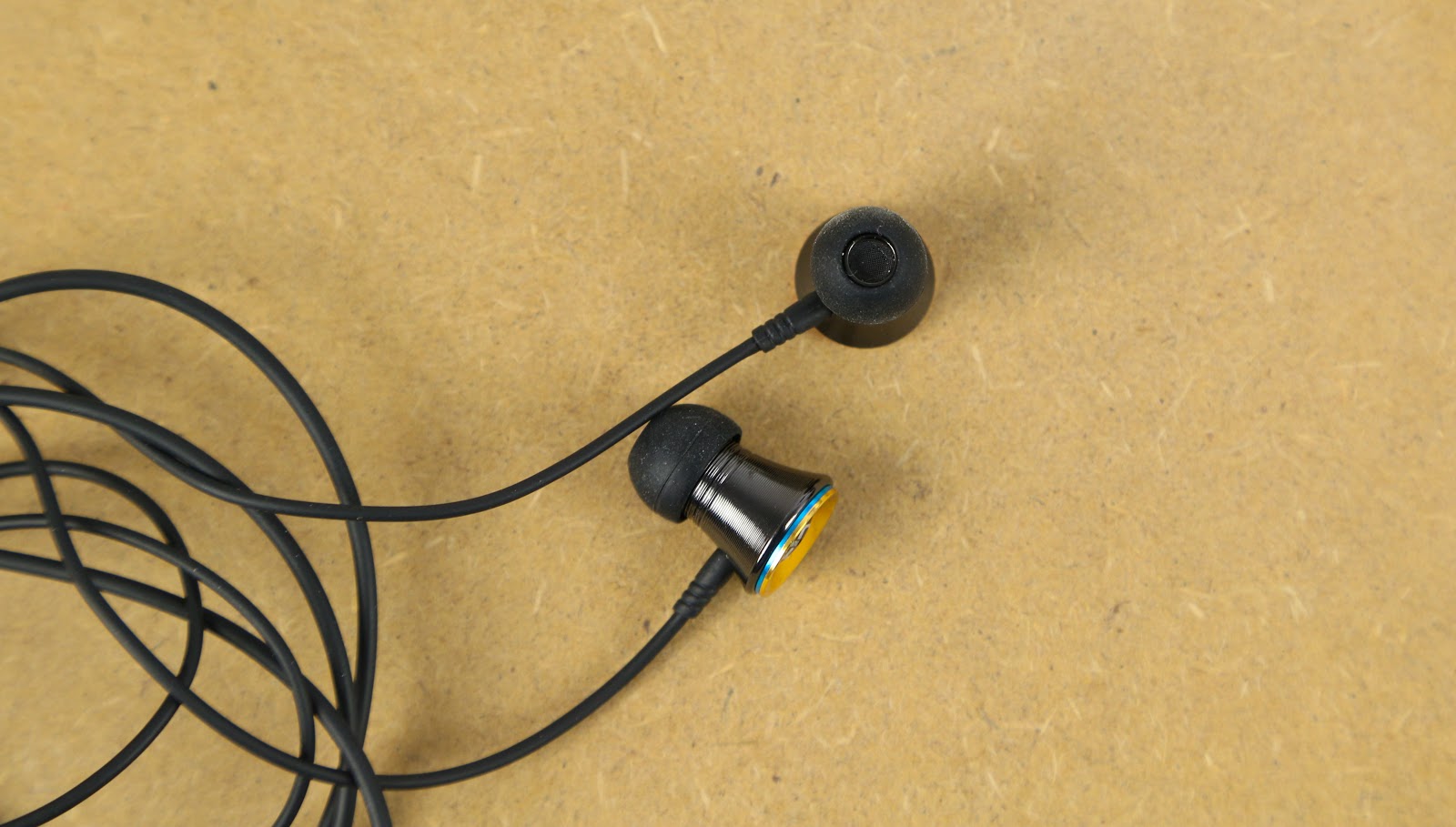
The manufacturer creatively approached the designation of the left / right headphones: they have a small ring on the body of blue and red, respectively. So the truth is much easier than looking out for the tiny letters “L” and “R”.
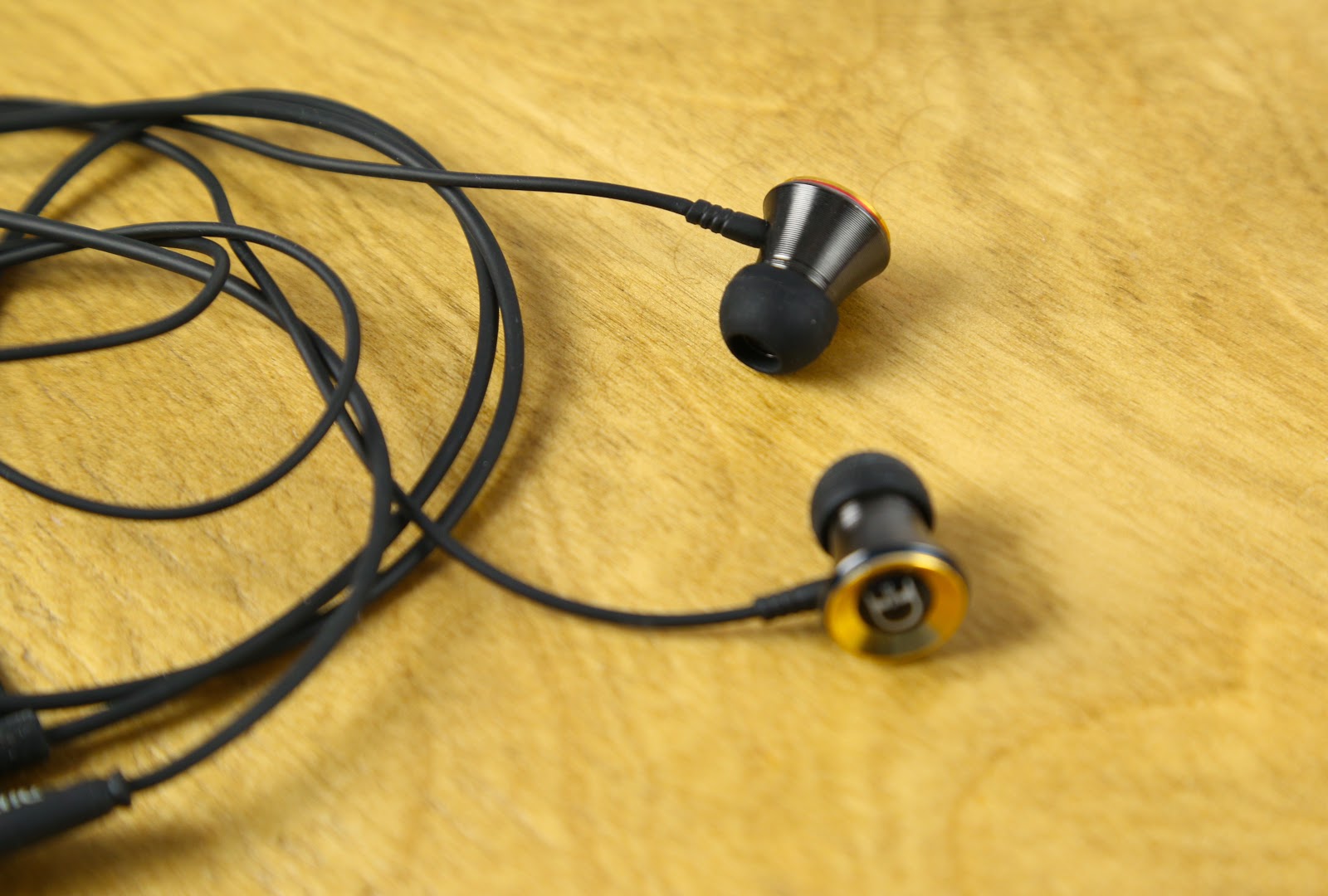
Headphones are spectacular and weighty, 22 grams give a feeling of reliability, so when you first met you can easily think that this model is worth at least 5 thousand rubles. The cable, though rather thin, is not confused due to the presence of a splitter and a fastener. Sometimes it seems that under the weight of the case it can “tear”, but in fact it is not so - the fixings are made securely. At the end of the cable is a gold-plated Y-shaped plug. You can easily connect your smartphone or player and put it in your pocket - with L-shaped plugs this is a little more difficult.
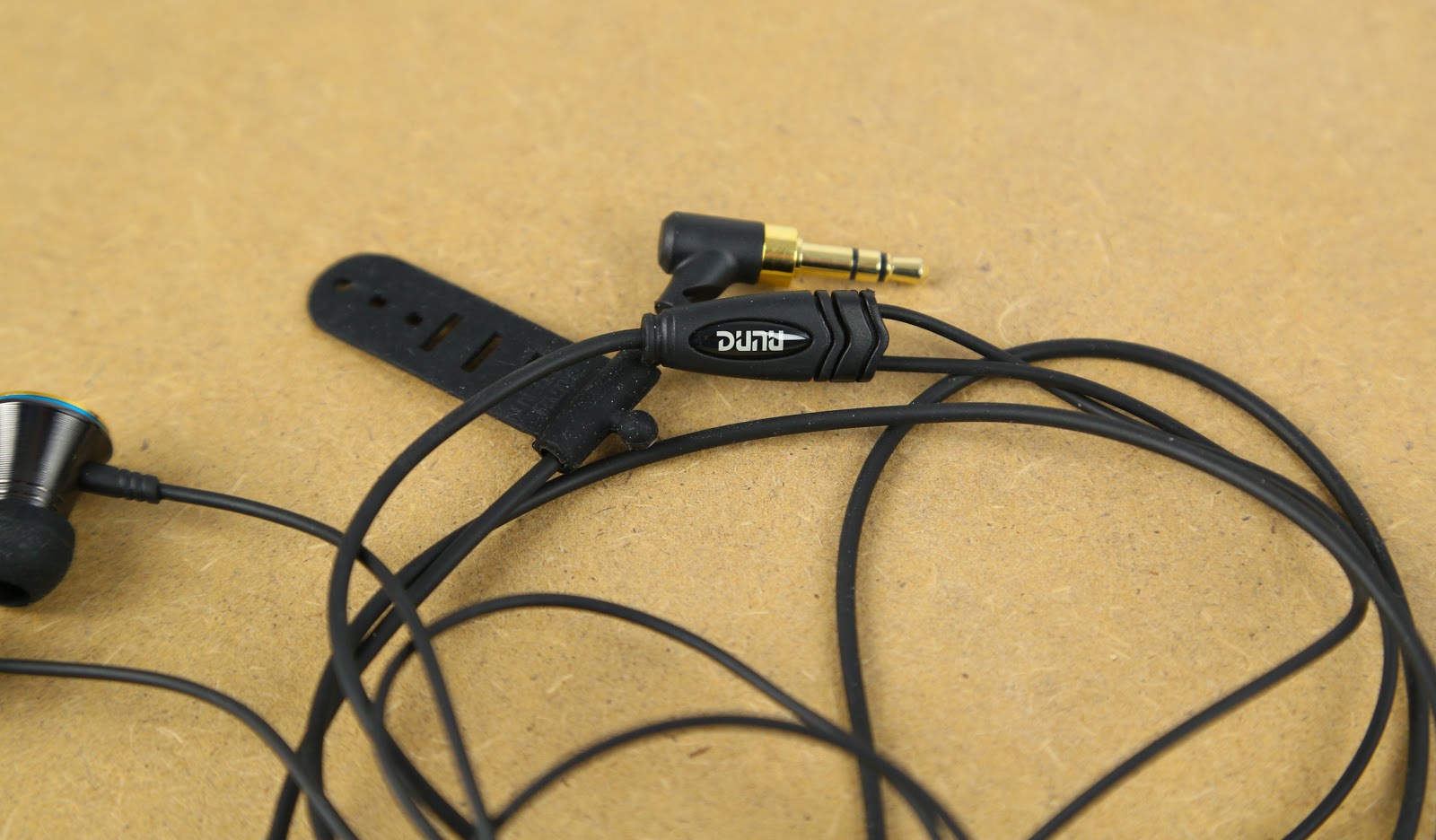
The famous saying can be adapted to audiophiles - “they meet by clothes, they escort by sound” (or they do not accompany them at all). And if everything is all right with the DN-12, the sound capabilities of the headphones should be disassembled separately.
DUNU is no exception and also states in the DN-12 frequency range from 10 to 20 000 Hz, although not everyone can estimate the upper frequency threshold. However, this had no effect on the subjective sensations from listening: yes, the bass is a bit lacking, when listening to tracks in the hip-hop genre, there is a feeling of some kind of “emptiness”, but the middle and high frequencies are quite acceptable for this price segment. Headphone testing was carried out with the player Fiio X1 (by the way, quite a good device, which pleased the autonomous work).
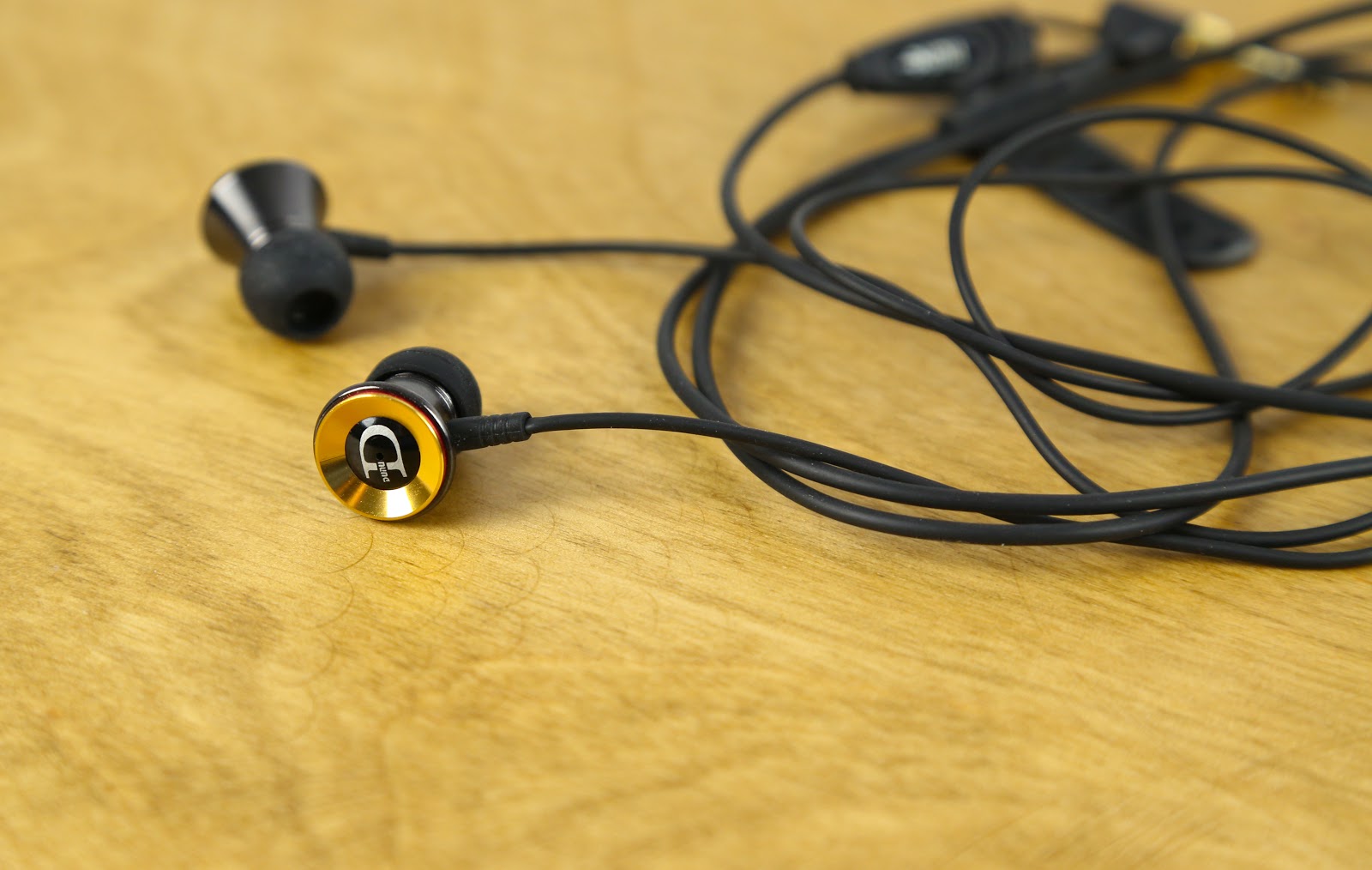
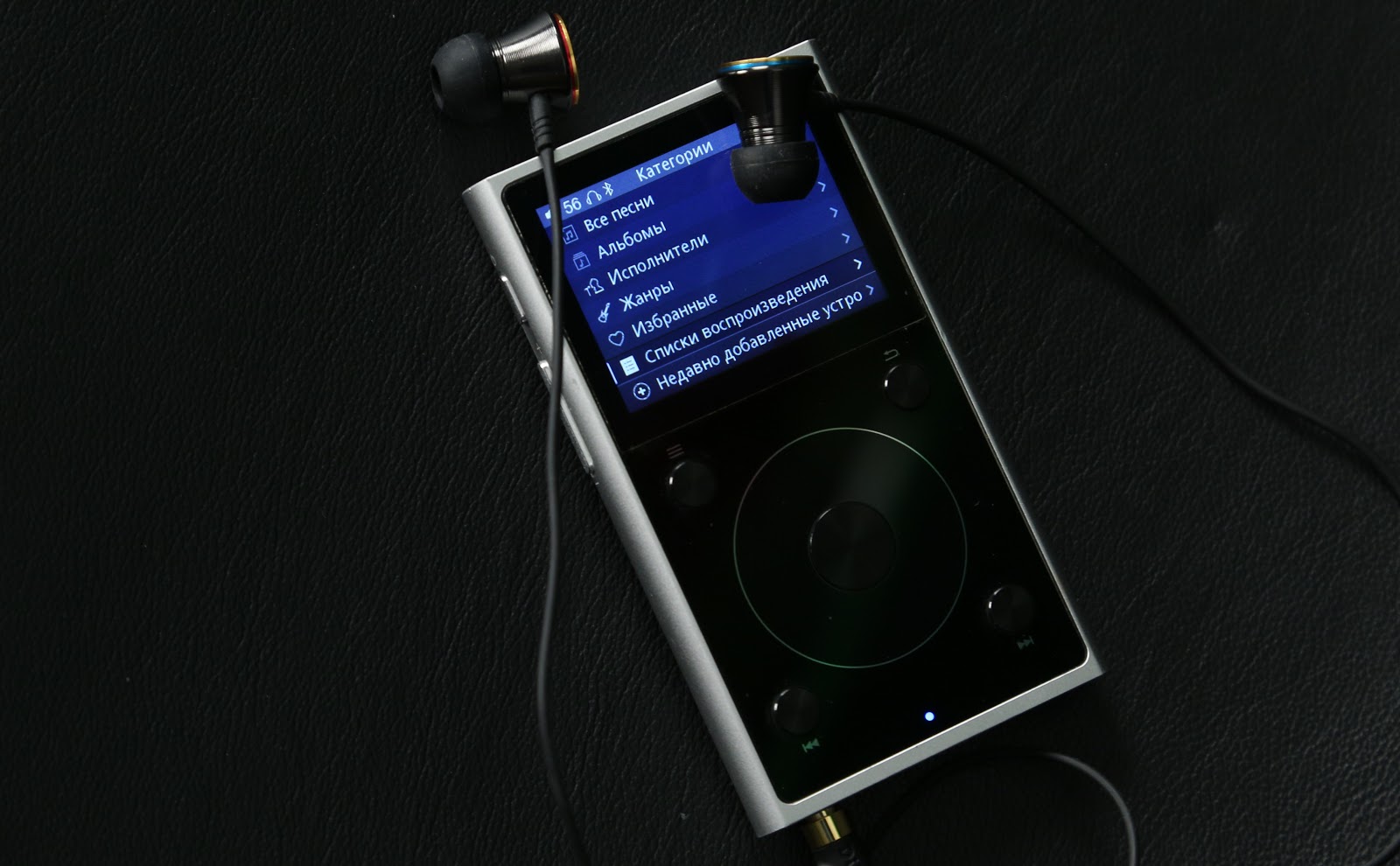
Sound insulation on an average level - you can ride the subway, but you still have to noticeably increase the volume, and there are dips in the frequency response, but you can forgive a lot for these headphones.
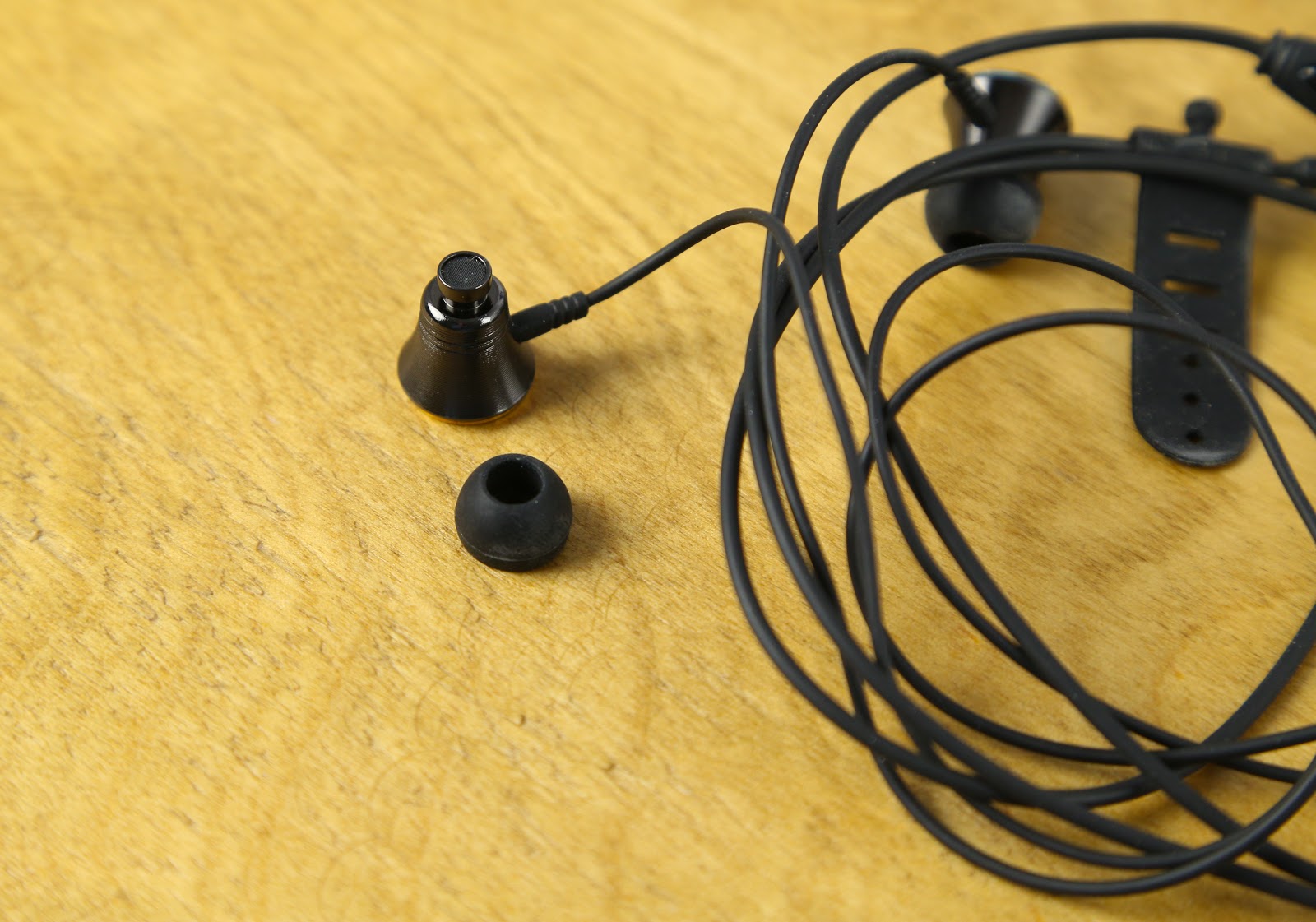
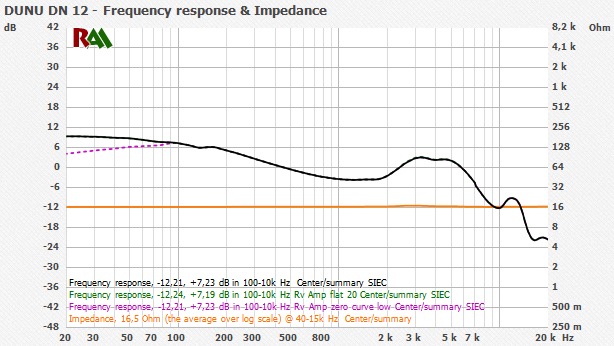
For use every day they will suit the majority of listeners, but, of course, not experienced audiophiles.
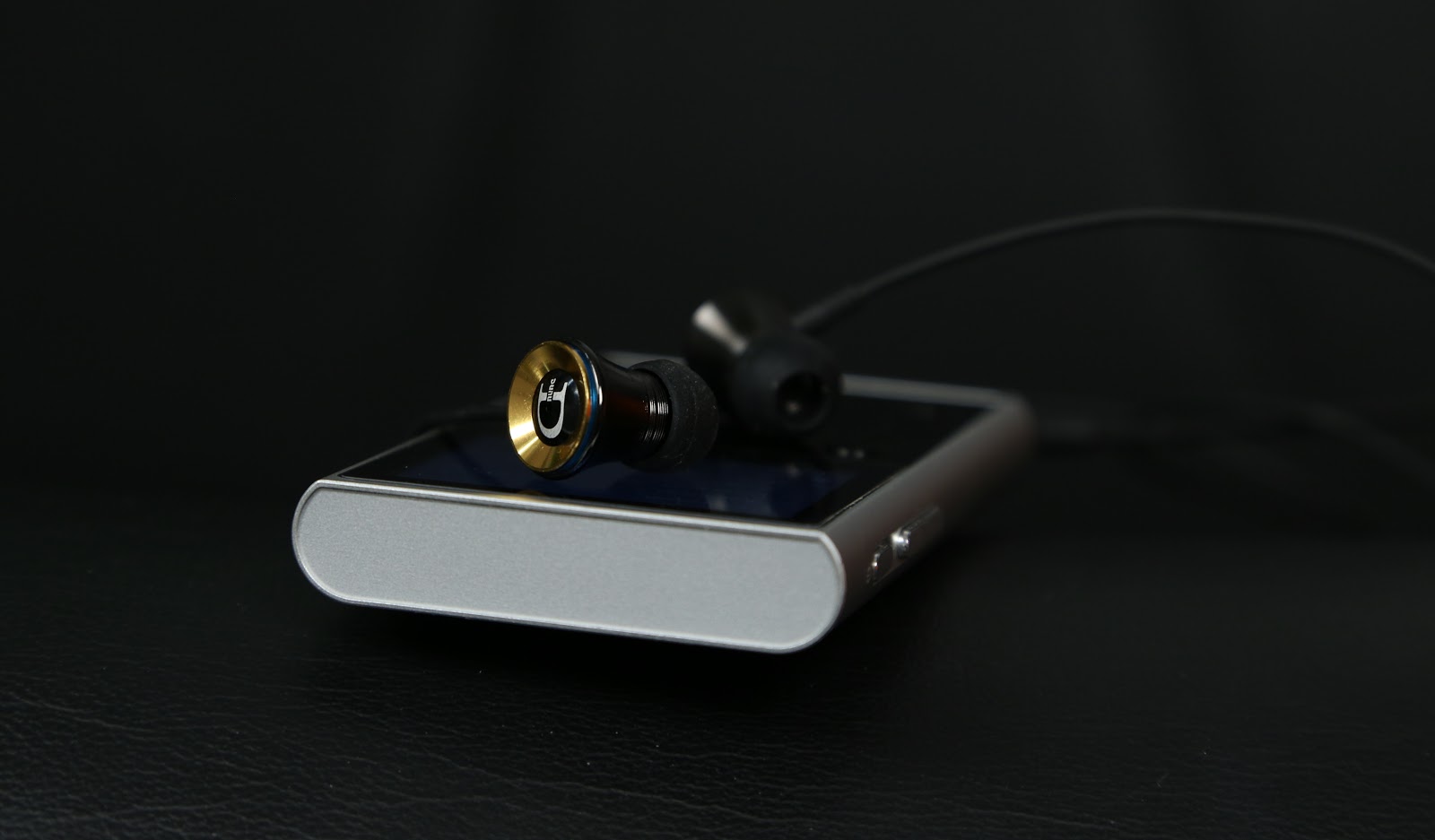
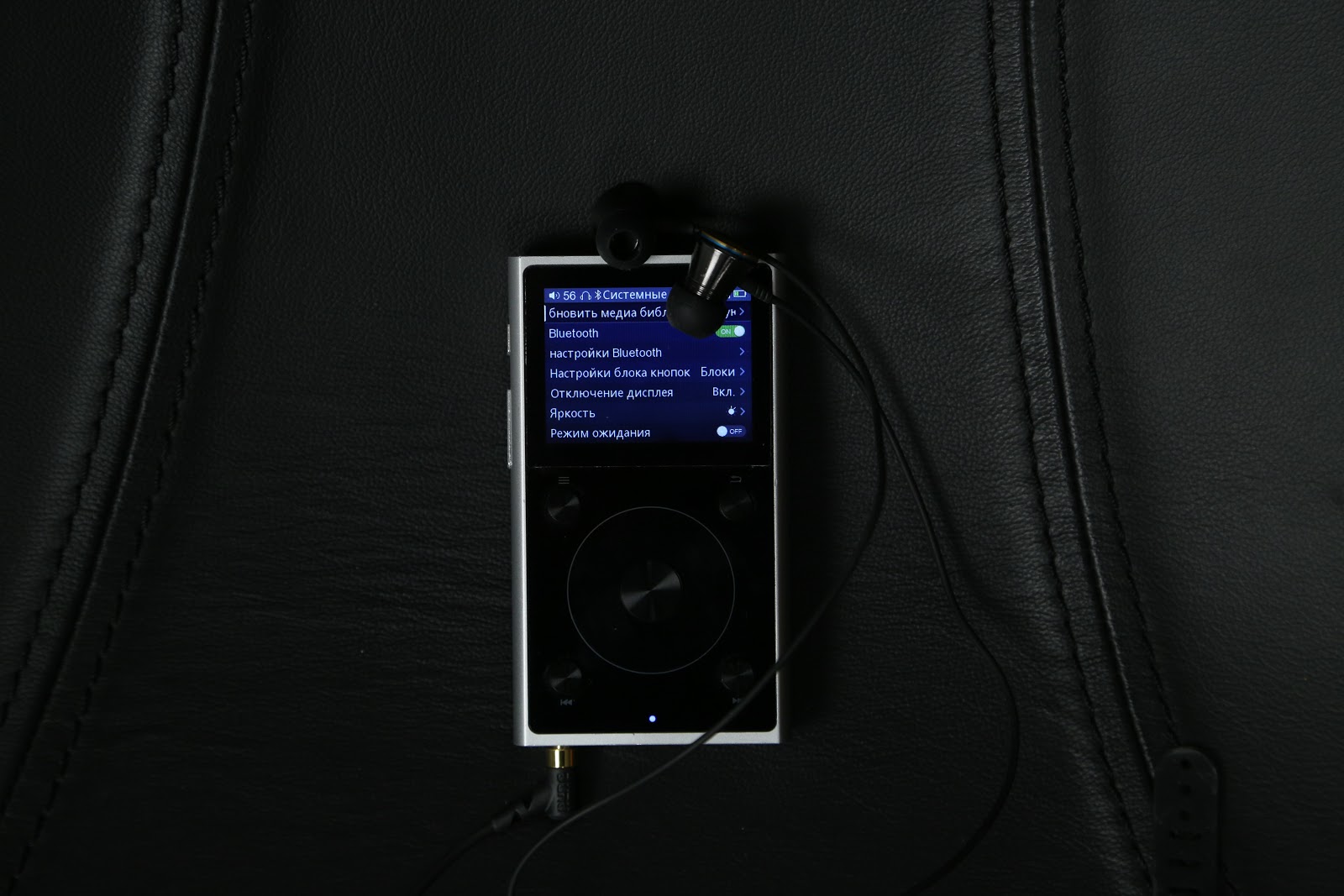
The second model of DUNU headphones turned out to be more interesting, and the name of it says - Titan 1es. Somewhere at the end of 2014, the first version of the Titan 1 appeared on the market, which received this name due to the use of a dynamic emitter with a titanium diaphragm. Some complained that the first model was too heavy due to the use of a metal case, as well as poor sound insulation. The manufacturer took into account these and many other wishes in the updated version of 1es: plastic case (but with metal inserts), sound insulation - better, headphones - more compact.
Headphones are delivered in a black box, which is equipped with a small window where you can see Titan 1es without getting them.
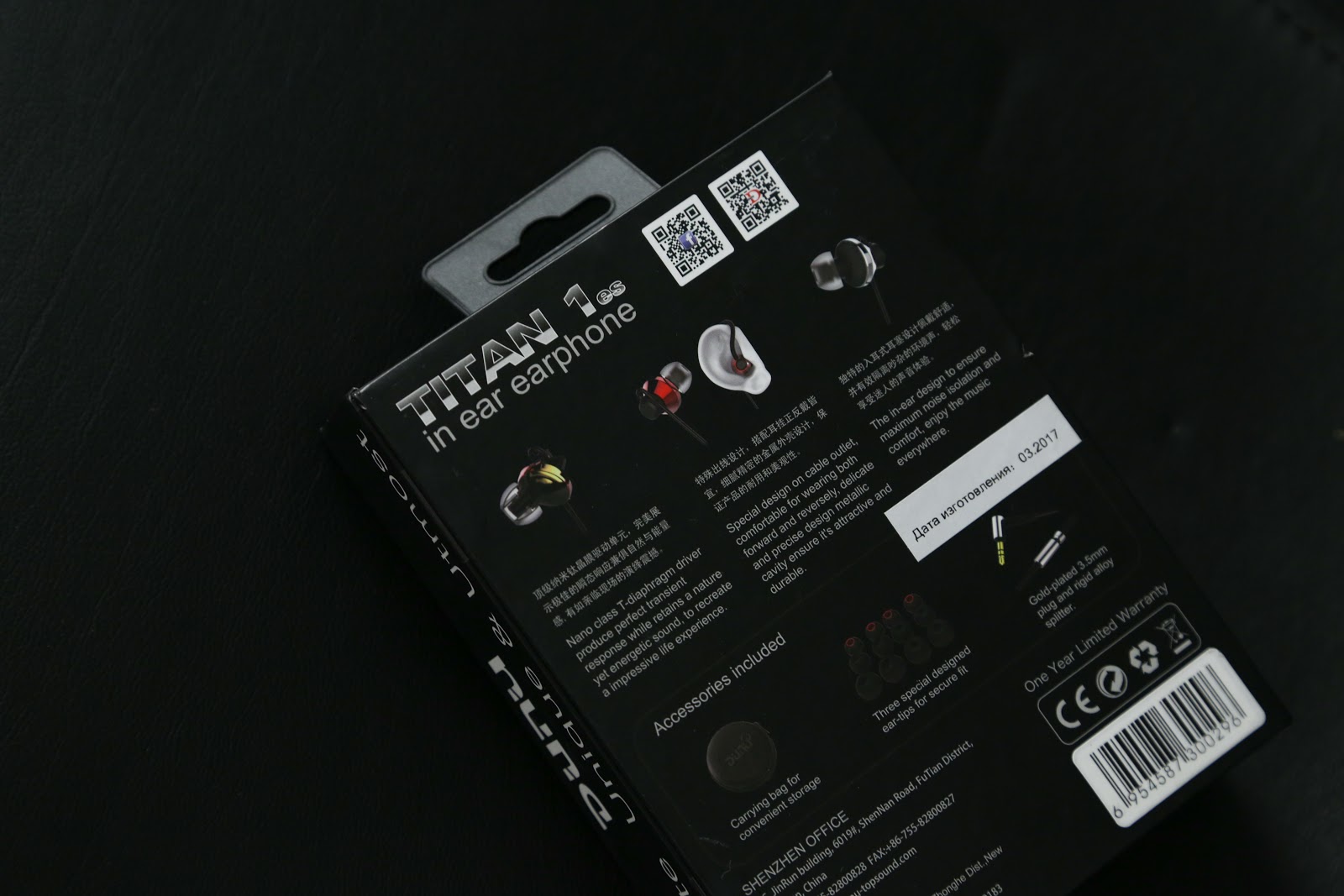
Of course, it was not without an impressive set of ear cushions (6 pairs, one already installed on the headphones), a hard case and clips for attaching the wire to the clothes. What really pleased us was the special earhooks with recesses for fixing the wires, which can be used, for example, when running, so that the headphones do not fall out of the ears. Under normal conditions, this is hardly useful, but still nice.
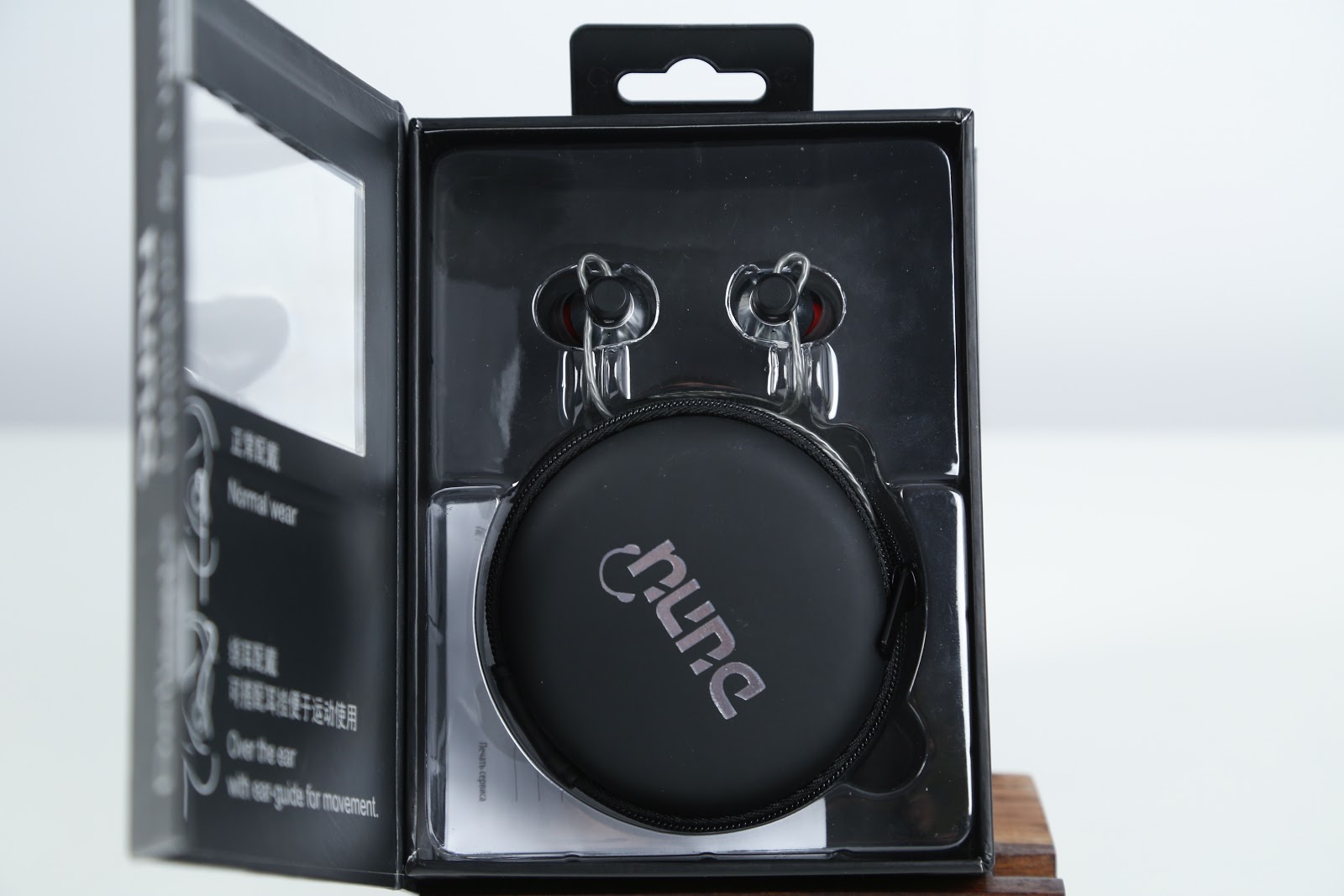
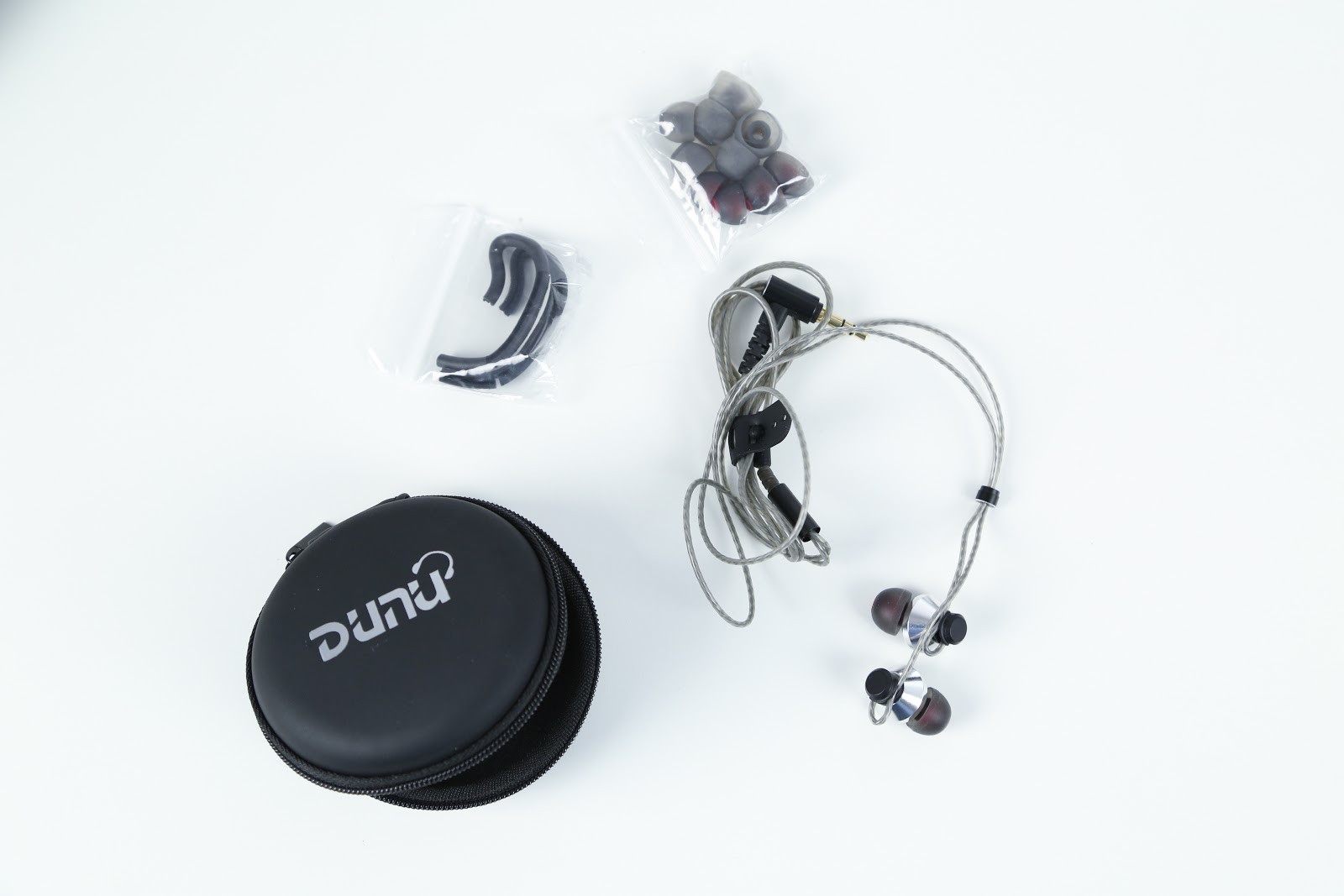
On this major note, perhaps, you can go to the characteristics of our "titanium" headphones.
The use of plastic really allowed making the headphones lighter (13 grams instead of 18), although the emphasis is still on the metal - still, after all, it is aviation aluminum. This is especially noticeable in the silver version, which turned out to be with us, but there are also headphones in black and red, which is not so striking. One hole instead of 11 (!) In Titan 1 clearly had a positive effect on sound insulation, and at the same time let us say right away that the sound did not suffer from this. What else would you like? Probably, foam nozzles with a memory effect, well, so that you can really immerse yourself in music.
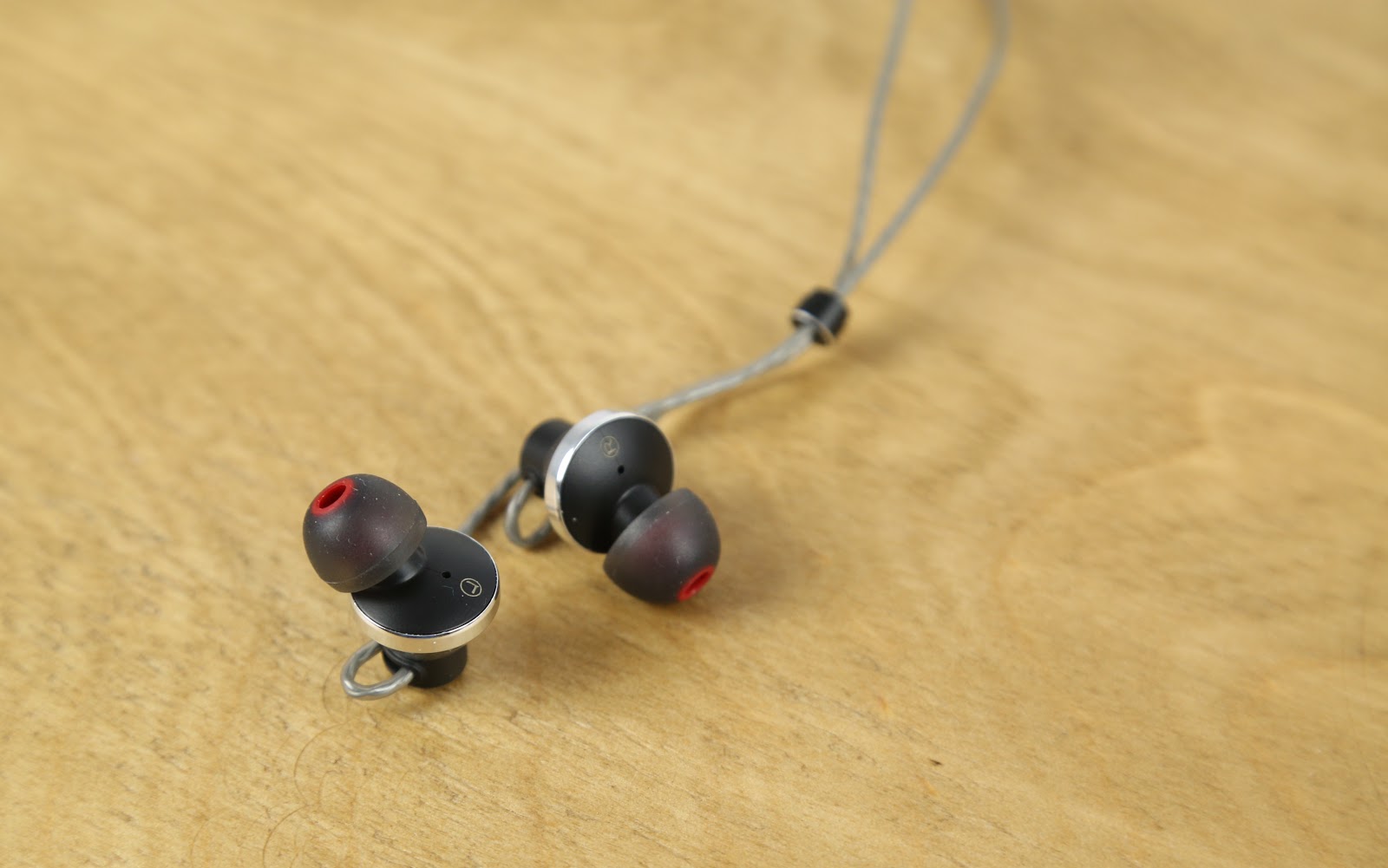

The cable output, as we said, is made in such a way that the headphones can be worn both in the traditional way and with the aid of ear hooks in the kit. The massive L-shaped headphone plug is also made of aluminum. And yes, it is gilded.
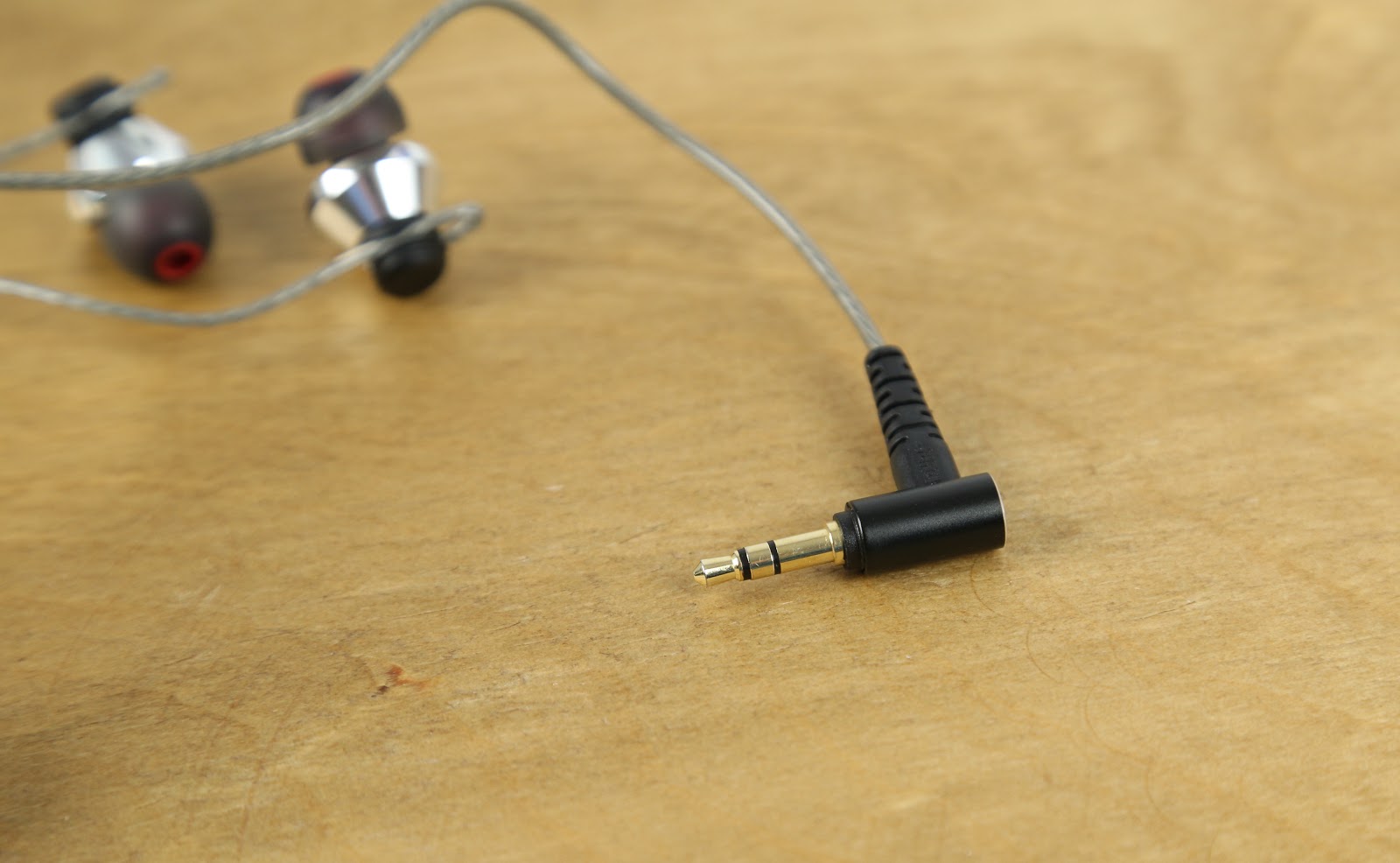
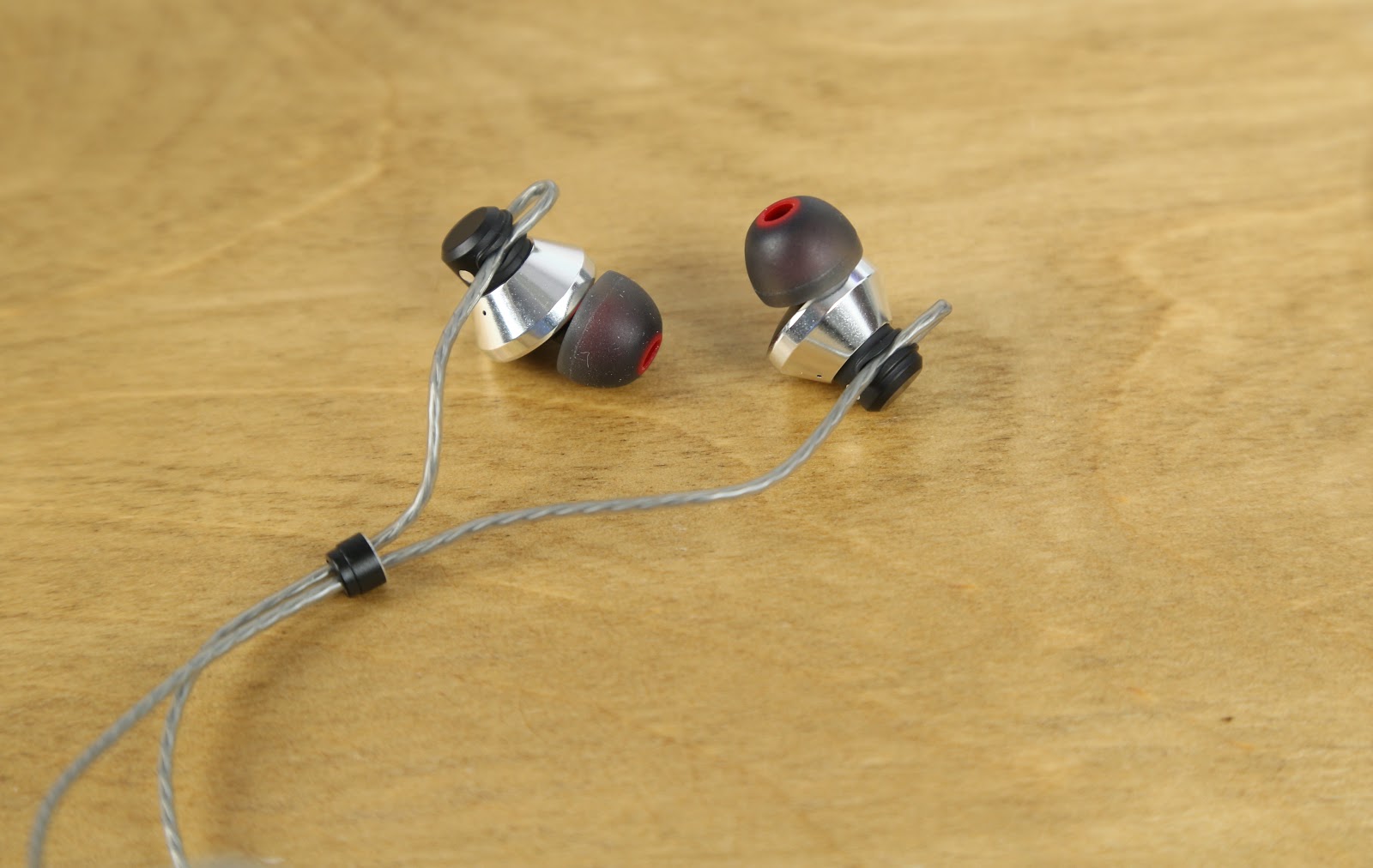
The splitter indicating the headphone model and the manufacturer's company is also metallic. The cable is durable with silicone sheath - it looks at least interesting. But so that the noise of the wire strikes the clothes does not distract from the music, ideally, of course, fasten it with a clip from the kit.
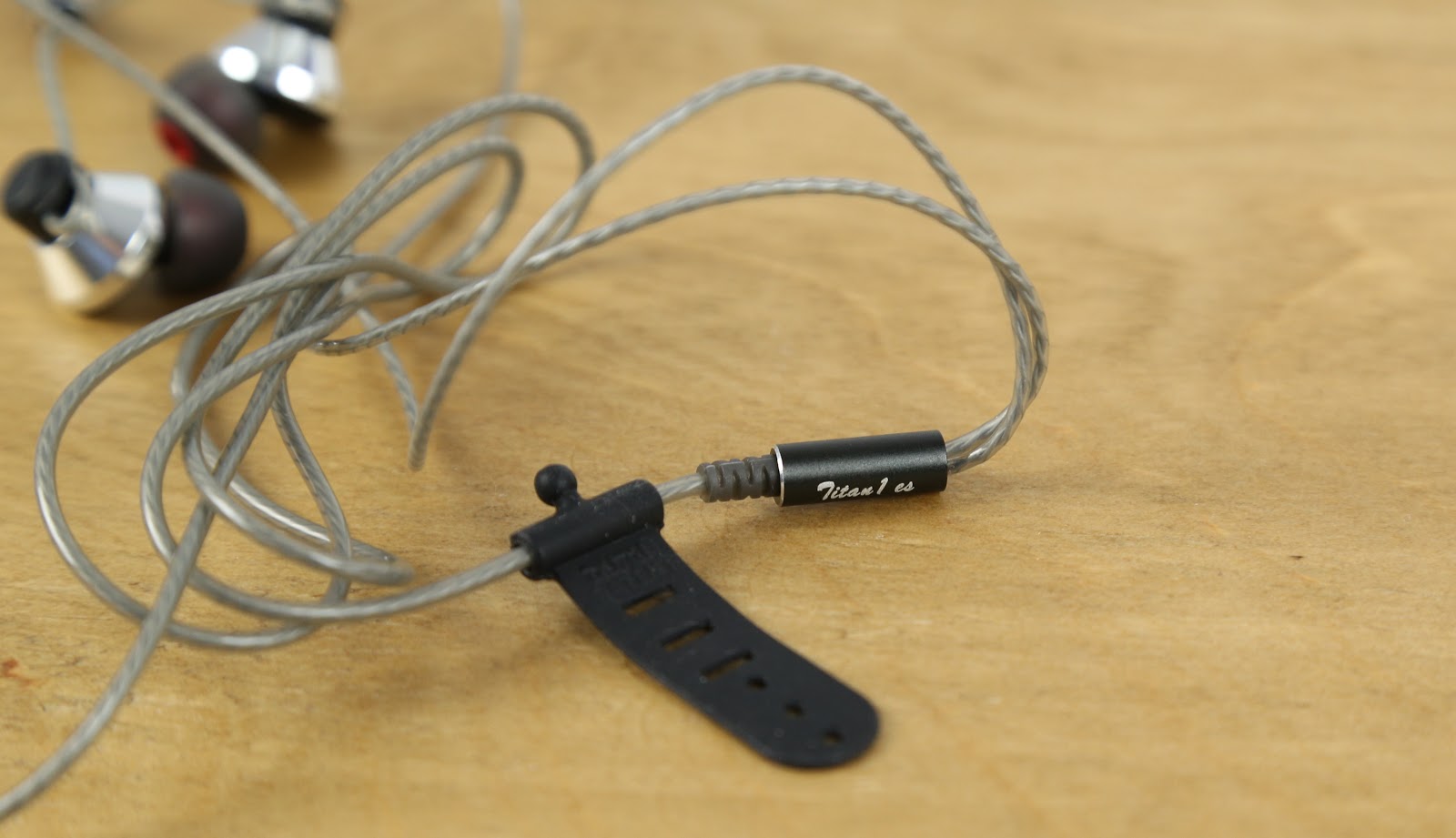
Compared with the Titan 1, this driver has increased the dynamic driver from 13 mm to 14 mm, while the titanium diaphragm is expected to go nowhere, because it is just the main "chip". Headphone manufacturers are constantly trying to ensure that the dynamic emitter diffuser is light, but hard. If it is too heavy, the membrane will not be able to accurately transmit all frequencies at the desired speed, and if the membrane is not firm enough, this can cause sound distortions. Titan solved this problem, since it is both light and solid, and this was used in DUNU.
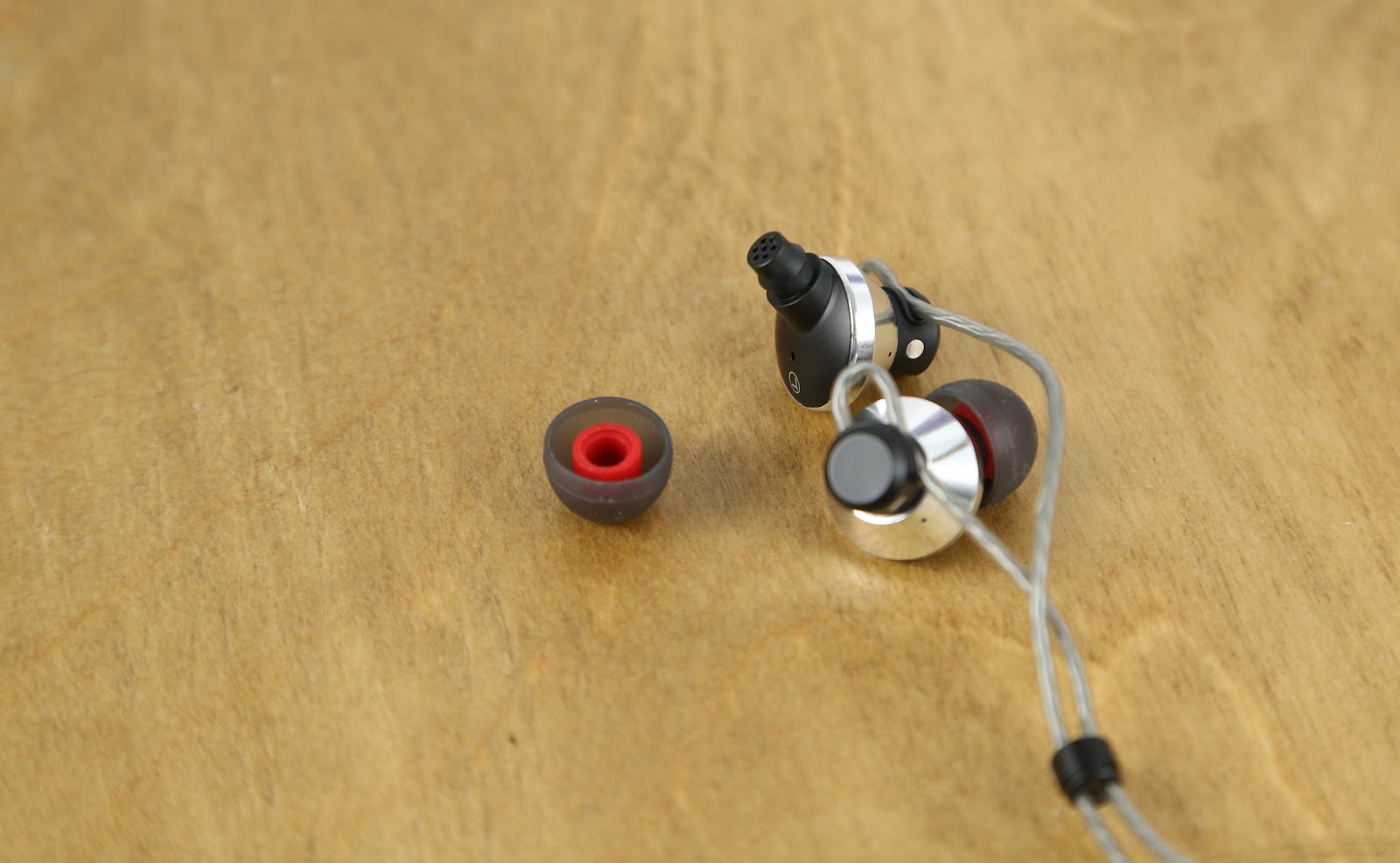
If the first "titan" could still somehow find fault, then in the case of the updated model it is quite difficult to do. More pleasantly, the headphones turned out to be relatively inexpensive - in Russia you can buy them for 3,500 rubles.
Regarding the work in the "field" conditions, Titan 1es worked perfectly with heavy music, and with hip-hop, and with "electronic" genres, which were tested on the same Fiio X1. Bass can be traced in very impressive quantities (but not brute-force), slightly lowered mids and clean highs.

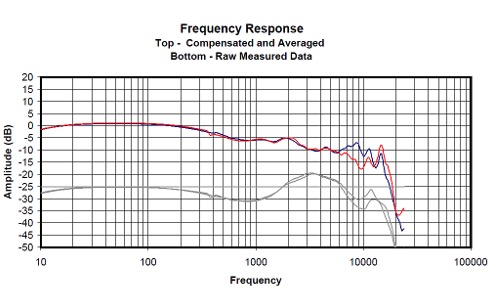
In the case of the DN-12, we still had questions to the sound, but here everything is very clear. However, the price segment of the "titanium" headphones is also different.
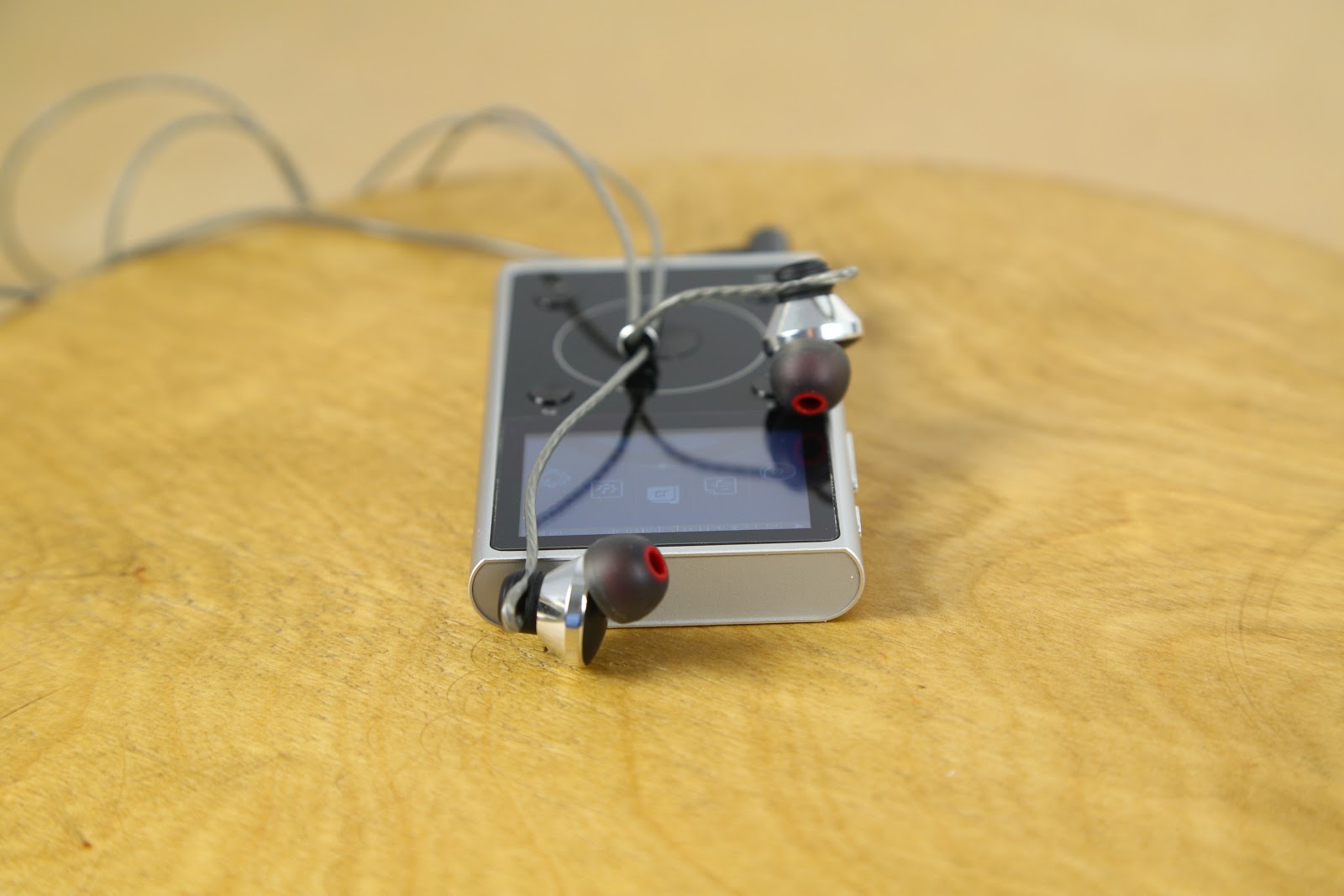
If you are looking for simple everyday headphones that have acceptable sound characteristics, the DUNU DN-12 may well be considered for purchase. But the analogue of expensive headphones of famous brands is still more likely to be called Titan 1 es : they are, of course, twice as expensive, but the “stuffing” of these headphones is appropriate, besides, they are ideal for sports using special mounts in the kit. In pursuit of the premium segment and the production of OEM, DUNU does not forget about the budget market, which, of course, is good for the Chinese company.
Let's start with the most budget model - DUNU Trident (DN-12). Although this is now far from new, the headphones continue to find recognition even among novice audiophiles - primarily as a high-quality, low-cost alternative to devices from well-known brands. Yes, this is “China”, but “China” is not the same as many are used to: DUNU does not stamp “gags”, like some manufacturers, the company constantly solves complex engineering problems in the field of personal audio, including OEMs for large manufacturers. in the sound market. Therefore, the price tag for headphones of this brand can go up to $ 500 (recall the same DK-3001 model with 4 different emitters). However, this story is not about our today's heroes with dynamic drivers, which does not make them any less interesting.
DUNU Trident Specifications ( DN-12 )
| Headphone Type
| Intra channel
|
| Driver
| Dynamic, 6.8 mm
|
| frequency range
| 10 - 20 000 Hz
|
| Impedance
| 16 ohm
|
| Sensitivity
| 95 ± 2 dB
|
| Cable
| 1.2 m
|
| Plug
| 3.5 mm corner
|
DUNU Trident Package (DN-12)
The black box with the image of the headphones themselves is not expected to cause any sensation of "premium", but at the same time does not look cheap.
The box itself (on the right) hides neatly packed headphones, a eco-leather case (sewn, by the way, perfectly), a lot of interchangeable ear cushions of different sizes, as well as a clip for attaching a cable to clothes. Looking ahead, we note that the headphones are very comfortable to wear, precisely because everyone can choose the right fit for themselves.
Let the package bundle is not the richest, but everything you need is there - and what were we waiting for, an adapter for two mono jacks for use in an airplane? There is still a completely different price segment.
Design DUNU Trident (DN-12)
But DN-12 does not look like its 1.5-2 thousand rubles (I'm sorry, but I didn't have enough strength to keep this price in my head). The headphone case is tapered, made of chrome-plated metal, and has a characteristic radial-shaped metal pattern. The latter, by the way, interestingly “plays” depending on the lighting.
The manufacturer creatively approached the designation of the left / right headphones: they have a small ring on the body of blue and red, respectively. So the truth is much easier than looking out for the tiny letters “L” and “R”.
Headphones are spectacular and weighty, 22 grams give a feeling of reliability, so when you first met you can easily think that this model is worth at least 5 thousand rubles. The cable, though rather thin, is not confused due to the presence of a splitter and a fastener. Sometimes it seems that under the weight of the case it can “tear”, but in fact it is not so - the fixings are made securely. At the end of the cable is a gold-plated Y-shaped plug. You can easily connect your smartphone or player and put it in your pocket - with L-shaped plugs this is a little more difficult.
The famous saying can be adapted to audiophiles - “they meet by clothes, they escort by sound” (or they do not accompany them at all). And if everything is all right with the DN-12, the sound capabilities of the headphones should be disassembled separately.
Sound
DUNU is no exception and also states in the DN-12 frequency range from 10 to 20 000 Hz, although not everyone can estimate the upper frequency threshold. However, this had no effect on the subjective sensations from listening: yes, the bass is a bit lacking, when listening to tracks in the hip-hop genre, there is a feeling of some kind of “emptiness”, but the middle and high frequencies are quite acceptable for this price segment. Headphone testing was carried out with the player Fiio X1 (by the way, quite a good device, which pleased the autonomous work).
Sound insulation on an average level - you can ride the subway, but you still have to noticeably increase the volume, and there are dips in the frequency response, but you can forgive a lot for these headphones.
For use every day they will suit the majority of listeners, but, of course, not experienced audiophiles.
The second model of DUNU headphones turned out to be more interesting, and the name of it says - Titan 1es. Somewhere at the end of 2014, the first version of the Titan 1 appeared on the market, which received this name due to the use of a dynamic emitter with a titanium diaphragm. Some complained that the first model was too heavy due to the use of a metal case, as well as poor sound insulation. The manufacturer took into account these and many other wishes in the updated version of 1es: plastic case (but with metal inserts), sound insulation - better, headphones - more compact.
Options Titan 1es
Headphones are delivered in a black box, which is equipped with a small window where you can see Titan 1es without getting them.
Of course, it was not without an impressive set of ear cushions (6 pairs, one already installed on the headphones), a hard case and clips for attaching the wire to the clothes. What really pleased us was the special earhooks with recesses for fixing the wires, which can be used, for example, when running, so that the headphones do not fall out of the ears. Under normal conditions, this is hardly useful, but still nice.
On this major note, perhaps, you can go to the characteristics of our "titanium" headphones.
DUNU Titan 1es specifications
| Headphone Type
| Intra channel
|
| Driver
| Dynamic, 14 mm, titanium diaphragm
|
| frequency range
| 20 - 20 000 Hz
|
| Impedance
| 16 ohm
|
| Sensitivity
| 102 ± 2 dB
|
| Cable
| 1.2 m
|
| Plug
| 3.5 mm, angular, gold plated
|
Design
The use of plastic really allowed making the headphones lighter (13 grams instead of 18), although the emphasis is still on the metal - still, after all, it is aviation aluminum. This is especially noticeable in the silver version, which turned out to be with us, but there are also headphones in black and red, which is not so striking. One hole instead of 11 (!) In Titan 1 clearly had a positive effect on sound insulation, and at the same time let us say right away that the sound did not suffer from this. What else would you like? Probably, foam nozzles with a memory effect, well, so that you can really immerse yourself in music.
The cable output, as we said, is made in such a way that the headphones can be worn both in the traditional way and with the aid of ear hooks in the kit. The massive L-shaped headphone plug is also made of aluminum. And yes, it is gilded.
The splitter indicating the headphone model and the manufacturer's company is also metallic. The cable is durable with silicone sheath - it looks at least interesting. But so that the noise of the wire strikes the clothes does not distract from the music, ideally, of course, fasten it with a clip from the kit.
Sound and technology
Compared with the Titan 1, this driver has increased the dynamic driver from 13 mm to 14 mm, while the titanium diaphragm is expected to go nowhere, because it is just the main "chip". Headphone manufacturers are constantly trying to ensure that the dynamic emitter diffuser is light, but hard. If it is too heavy, the membrane will not be able to accurately transmit all frequencies at the desired speed, and if the membrane is not firm enough, this can cause sound distortions. Titan solved this problem, since it is both light and solid, and this was used in DUNU.
If the first "titan" could still somehow find fault, then in the case of the updated model it is quite difficult to do. More pleasantly, the headphones turned out to be relatively inexpensive - in Russia you can buy them for 3,500 rubles.
Regarding the work in the "field" conditions, Titan 1es worked perfectly with heavy music, and with hip-hop, and with "electronic" genres, which were tested on the same Fiio X1. Bass can be traced in very impressive quantities (but not brute-force), slightly lowered mids and clean highs.
In the case of the DN-12, we still had questions to the sound, but here everything is very clear. However, the price segment of the "titanium" headphones is also different.
What to choose?
If you are looking for simple everyday headphones that have acceptable sound characteristics, the DUNU DN-12 may well be considered for purchase. But the analogue of expensive headphones of famous brands is still more likely to be called Titan 1 es : they are, of course, twice as expensive, but the “stuffing” of these headphones is appropriate, besides, they are ideal for sports using special mounts in the kit. In pursuit of the premium segment and the production of OEM, DUNU does not forget about the budget market, which, of course, is good for the Chinese company.
All Articles